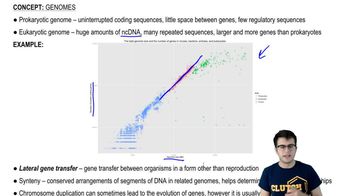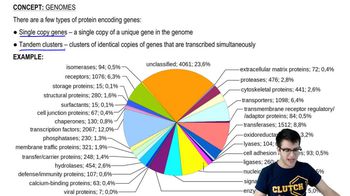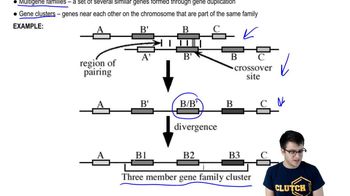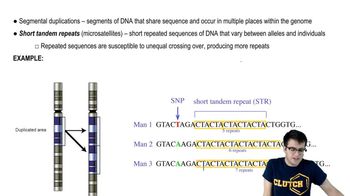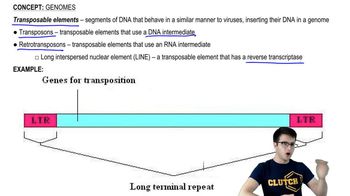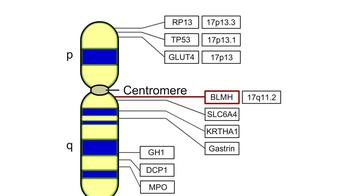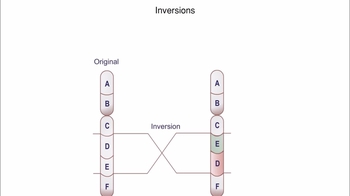19. Genomics
Genomes
19. Genomics
Genomes
Additional 25 creators.
Learn with other creators
Showing 28 of 28 videos
Practice this topic
- Multiple ChoiceOnce an organism's genome sequence has been determined, how do scientists generally start identifying all the genes within the genome?
- Multiple ChoiceWhat tool or resource is useful for identifying previously unknown protein-coding genes in a genomic DNA sequence?
- Multiple ChoiceMultigene families arise as a result of __________.
- Multiple ChoiceWho discovered "jumping genes" (transposons)?
- Open QuestionBioinformatics includes(A)using DNA technology to clone genes.(B)using computer programs to align DNA sequences.(C)using a person's genomic sequence to inform decisions about medical treatment.(D)amplifying DNA segments from a species' genome.
- Open Question(d)Primates and rodents diverged about 65 million years ago, and chimpanzees and humans diverged about 6 million years ago (see Figure 21.17). How many amino acid differences are there between the sequence for the mouse and the sequence for the chimpanzee, gorilla, and rhesus monkey? How many amino acid differences are there between the human se-quence and the sequence for the chimpanzee, gorilla, and rhesus monkey? Based solely on the numbers of amino acid differences occurring over these time periods, what might you hypothesize about the rate of evolution of the FOXP2gene? Based on the information in the chapter regarding the FOXP2 gene, is your hypothesis correct?
- Open Question(c)In the human sequence, underline any amino acid that differs from the sequence for the chimpanzee, gorilla, and rhesus monkey.
- Open Question(b)In the sequence for the mouse, circle any amino acid that differs from the sequence for the chimpanzee, gorilla, and rhesus monkey. Then draw a box around any amino acid that differs from the human sequence.
